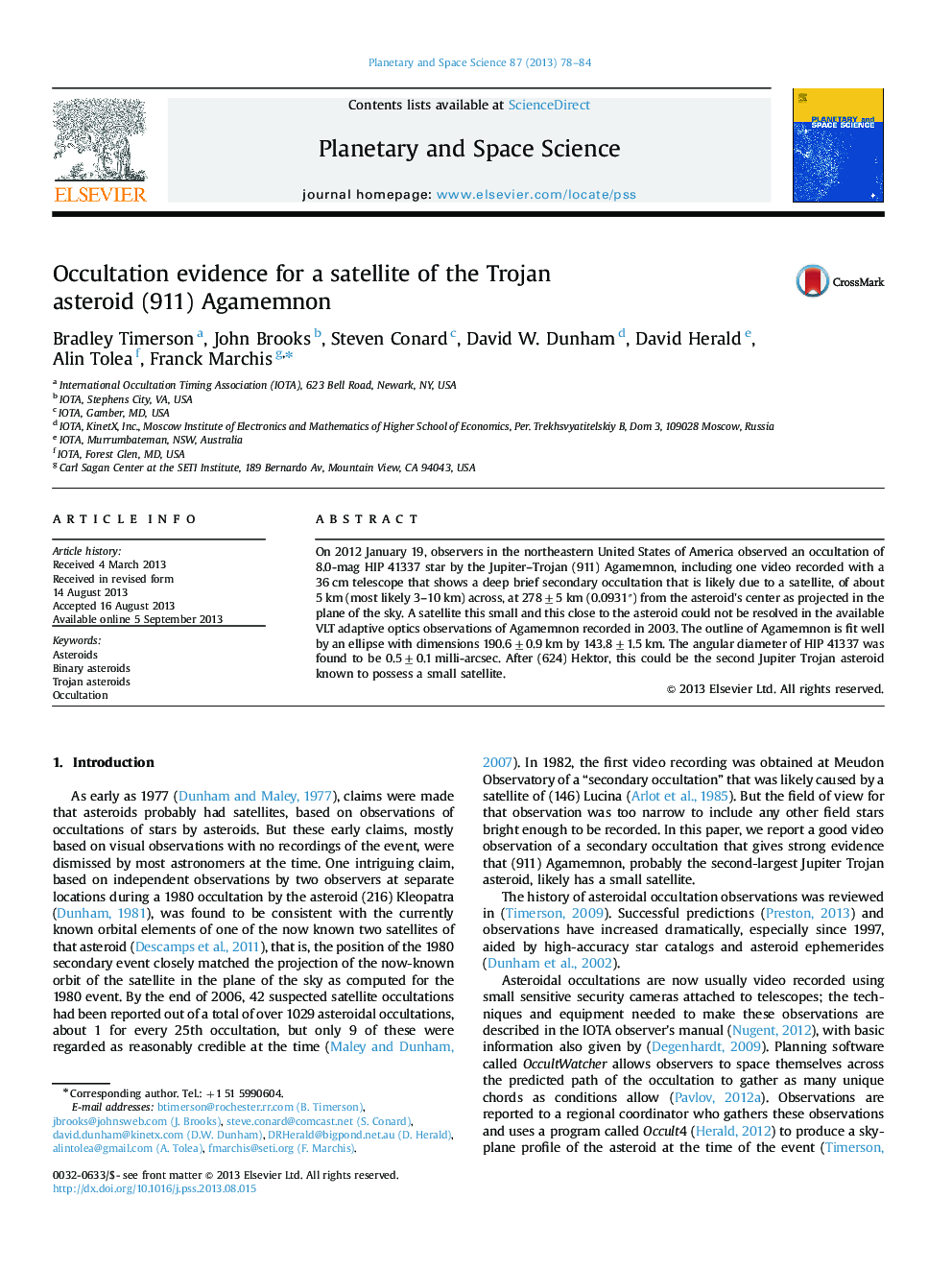| Article ID | Journal | Published Year | Pages | File Type |
|---|---|---|---|---|
| 1781197 | Planetary and Space Science | 2013 | 7 Pages |
•On January 9, 2012 a stellar occultation by the Trojan asteroid (911) Agamemnon was observed in Northeastern US.•From the occultation chords, the primary asteroid shape was approximated by an ellipse with 191±1 km by 144±2 km.•One observer video-recorded a high S/N brief secondary occultation, likely due to a satellite.•We estimated the satellite size to be 5 km across and located 278 km from the primary.•Inspection of VLT AO images revealed that this satellite is not detectable with current telescopes.
On 2012 January 19, observers in the northeastern United States of America observed an occultation of 8.0-mag HIP 41337 star by the Jupiter–Trojan (911) Agamemnon, including one video recorded with a 36 cm telescope that shows a deep brief secondary occultation that is likely due to a satellite, of about 5 km (most likely 3–10 km) across, at 278±5 km (0.0931″) from the asteroid's center as projected in the plane of the sky. A satellite this small and this close to the asteroid could not be resolved in the available VLT adaptive optics observations of Agamemnon recorded in 2003. The outline of Agamemnon is fit well by an ellipse with dimensions 190.6±0.9 km by 143.8±1.5 km. The angular diameter of HIP 41337 was found to be 0.5±0.1 milli-arcsec. After (624) Hektor, this could be the second Jupiter Trojan asteroid known to possess a small satellite.
